Table of Contents for South Carolina Milkweeds
South Carolina Milkweed Species to Include in your Butterfly Garden
There are twenty species of South Carolina milkweeds (Asclepias spp.) that are native and can be grown for Monarchs and other butterflies such as Queen and Soldier butterflies. The Monarch butterfly in particular uses the cardenolides found in the milky sap of milkweeds to give an unpleasant taste to predators. These plants are also an important nectar source to all insects visiting your pollinator garden. Seeds for a number of these native South Carolina milkweeds can be found in the garden shop.
List of South Carolina Milkweeds (Asclepias spp.)
1. Clasping Milkweed (Asclepias amplexicaulis), a Milkweed for Sandy Soils
Clasping Milkweed (Asclepias amplexicaulis): Clasping milkweed grows throughout South Carolina (Kartesz 2015). In the wild, clasping milkweed grows in dry woodlands, prairies, meadows, and roadsides that have sandy or gravelly soil. Growing up to 3 feet tall, this milkweed has greenish-pink, red, brown, to purple flowers that bloom from March to September.
In your South Carolina butterfly garden, this milkweed is hardy in zones 3-9 and requires full sun to part-shade and moist to dry sandy soils. Seeds of clasping milkweed can be purchased in the McMullen House Bed & Breakfast Garden Shop.
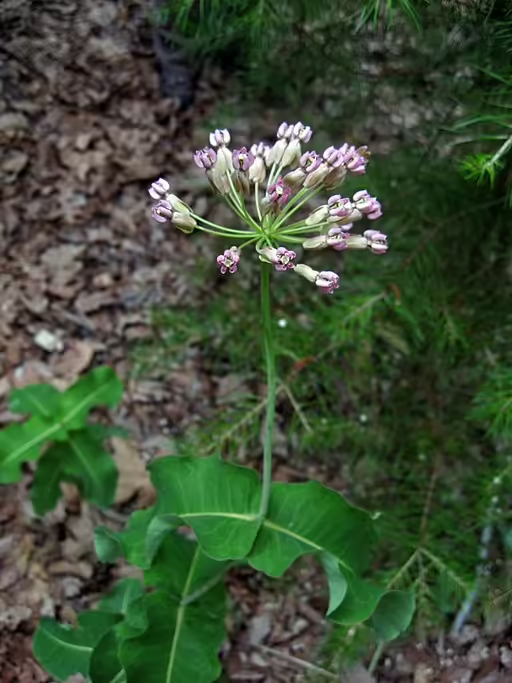
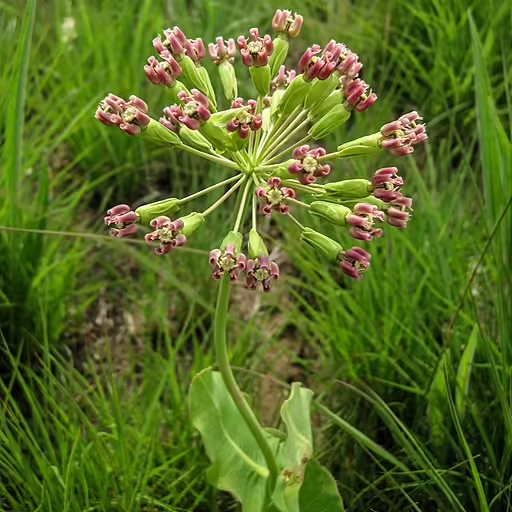

2. Carolina Milkweed (Asclepias cinerea), a Milkweed for Sandy Soils
Carolina Milkweed (Asclepias cinerea): Carolina milkweed grows in Jasper and Hampton counties of South Carolina (Kartesz 2015). In the wild, Carolina milkweed grows in savannas, meadows, grasslands, pine barrens, and sandy ridges. Growing from 1 to 2.5 feet tall, this milkweed has white (Woodson 1954) to ashy-gray (Weakley 2022) flowers that bloom from May to August.
In your South Carolina butterfly garden, carolina milkweed is hardy in zones 8-10 and requires full sun to part-shade and sandy soils.
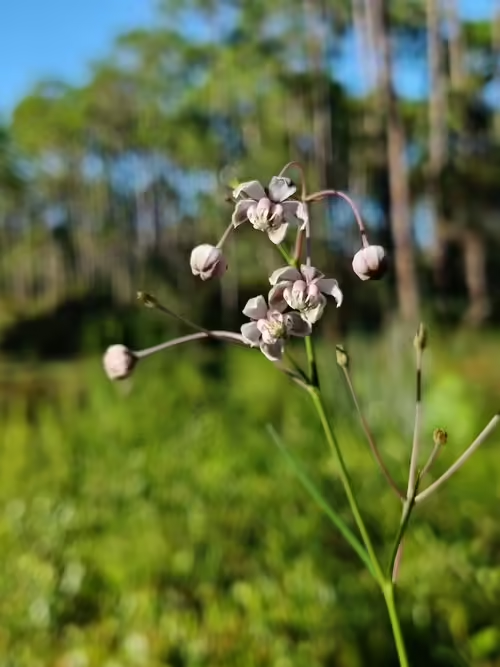


3. Large-flower Milkweed (Asclepias connivens), a Milkweed for Moist Soil
Large-flower Milkweed (Asclepias connivens): Large-flower milkweed is considered rare and grows in Jasper and Beaufort counties of South Carolina (Kartesz 2015). In the wild, large-flower milkweed grows in pine barrens, flatwoods, bogs, marshes, and swamp margins. Growing from 0.5 to 3 feet tall, this milkweed has white to greenish-white (Woodson 1954) mixing with purple (Weakley 2022) flowers that bloom from June to August.
In your South Carolina butterfly garden, this milkweed is hardy in zones 8-11 and requires full sun in moist soils.
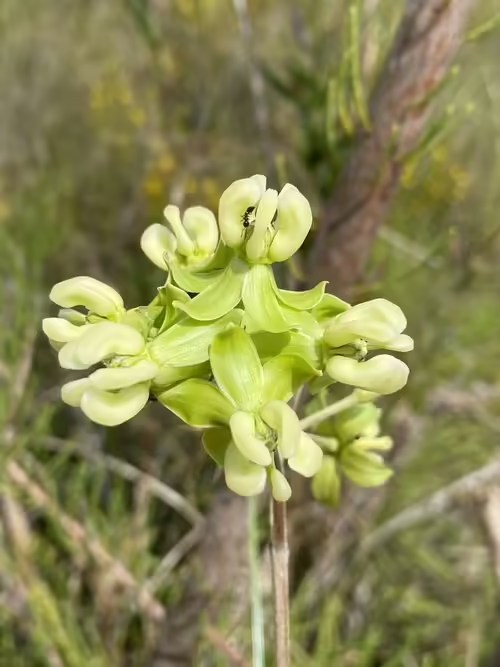
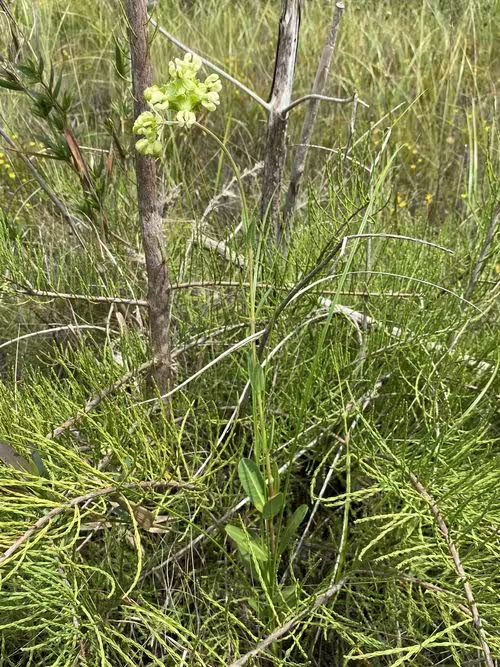
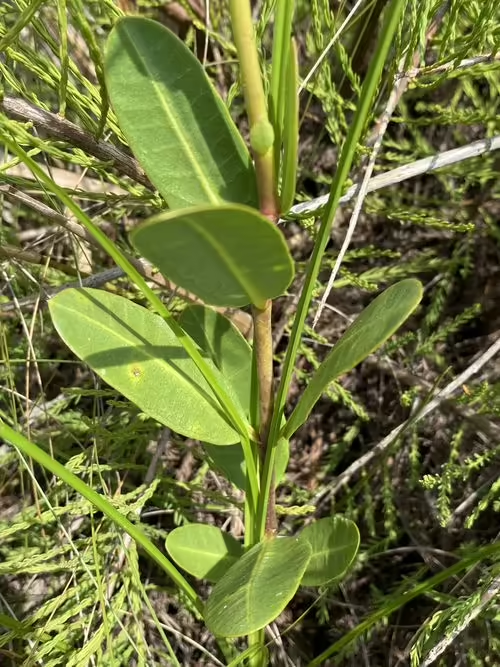
4. Poke Milkweed (Asclepias exaltata), a Milkweed for shade and Moist Soils
Poke Milkweed (Ascelpias exaltata): Poke milkweed grows in the northwestern counties of South Carolina (Kartesz 2015). In the wild, poke milkweed grows in moist woods, roadsides, and the edges of woods. Growing from 2 to 6 feet tall, it is one of the taller milkweeds in South Carolina and has flowers that are white to green with accents of rose, purple, or blue. Blooming occurs from May to August.
In your South Carolina butterfly garden, this milkweed is hardy in zones 3-9 and requires part-shade to full shade and moist soil. For shade gardens, this is a choice milkweed. Seeds of poke milkweed can be purchased in the McMullen House Bed & Breakfast Garden Shop.


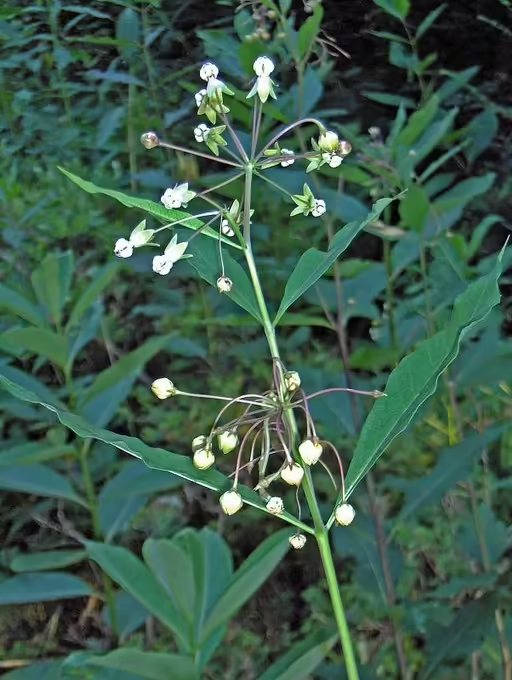
5. Sandhill Milkweed (Asclepias humistrata), a Milkweed for Sandy Soil
Sandhill Milkweed (Ascelpias humistrata): Sandhill milkweed is native in the central and southeastern counties of South Carolina (Kartesz 2015). In the wild, sandhill milkweed grows, as the name suggests, on sandhills, but it also can found in dry oak woods, pine barrens, as well as roadsides. Growing from 1 to 3 feet tall, the flowers are white, pink, or purple and bloom from April to July.
In your South Carolina butterfly garden, this milkweed is hardy in zones 8-9 and requires full sun and mesic to dry sandy soil. In a garden it can also handle part-shade conditions. Seeds of sandhill milkweed can be purchased in the McMullen House Bed & Breakfast Garden Shop.

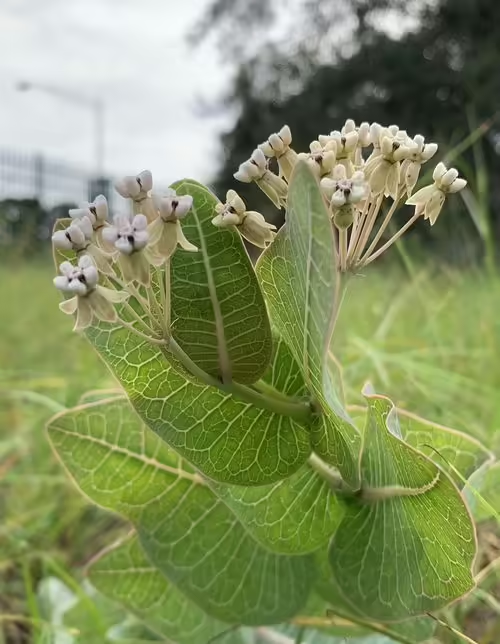
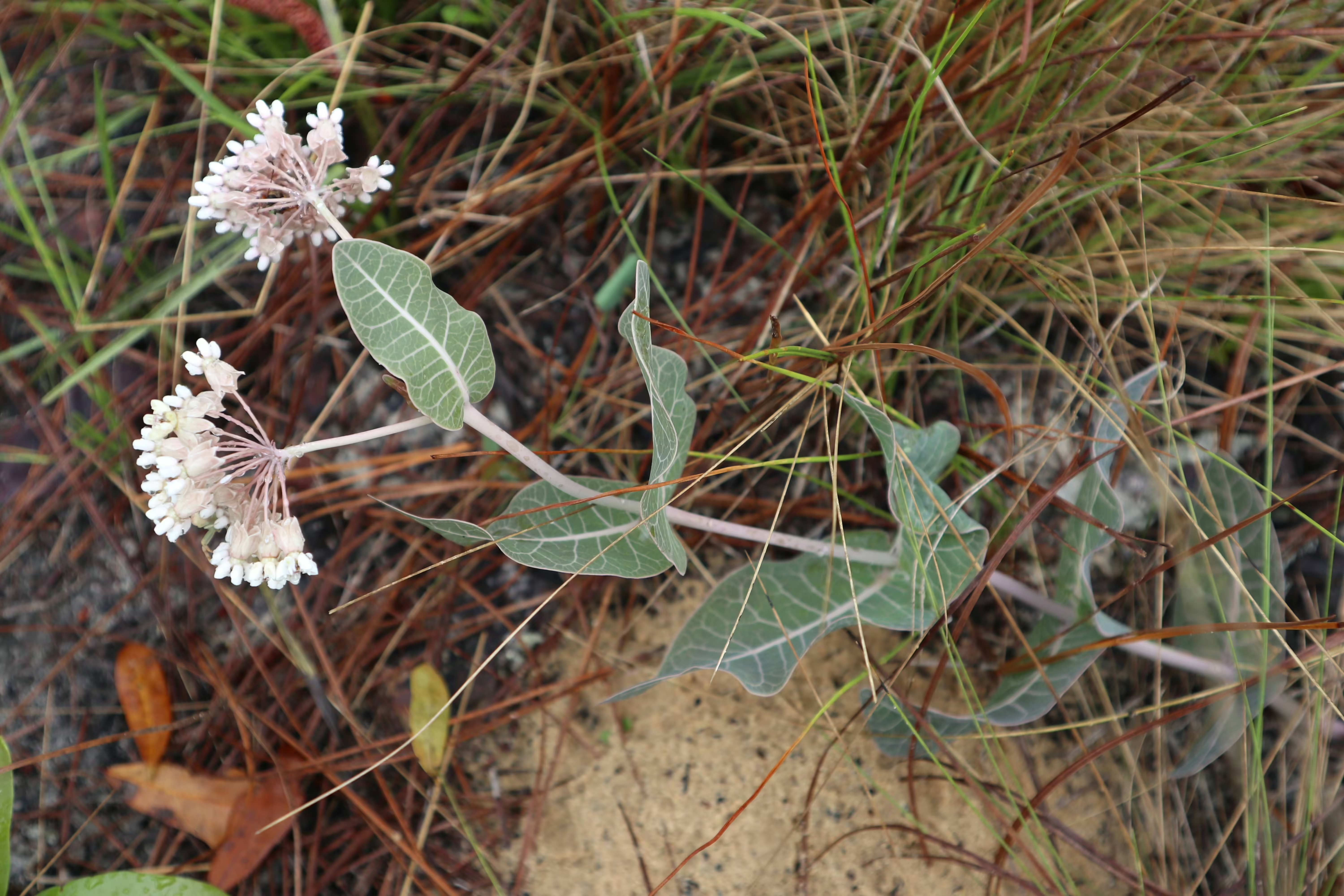
6. Swamp Milkweed (Asclepias incarnata), a Milkweed for Moist Soils
4. Swamp Milkweed (Asclepias incarnata): Swamp milkweed has two subspecies, ssp. incarnata and ssp. pulchra. Only ssp. pulchra grows mainly in the northwestern counties, with two disjunct localities in the north-central and southern counties of South Carolina (Kartesz 2015). Like the name suggests swamp milkweed grows in wet places such as the shores of streams, lakes, ponds, and other wetlands. However, as a landscape plant it can exist in drier places. The flowers are variable and are generally a pink to red color, but there is also a white cultivar (pictured below).
In your South Carolina butterfly garden, this subsp. is hardy in zones 4-9 and requires full sun to partial-shade and well-drained soil. Seeds of swamp milkweed can be purchased in the McMullen House Bed & Breakfast Garden Shop.
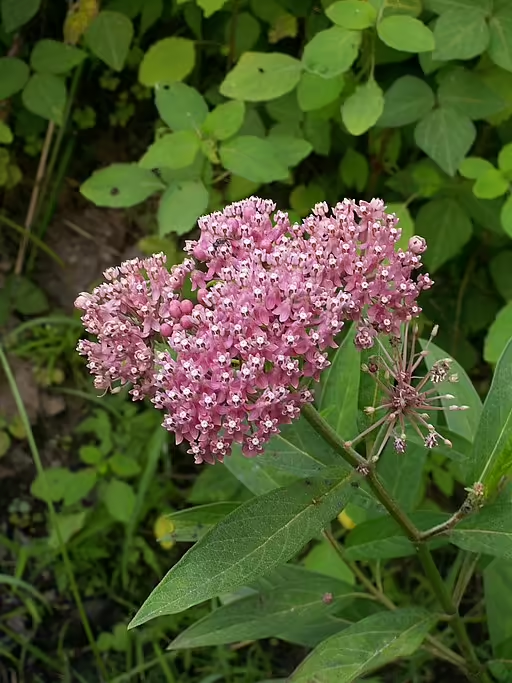

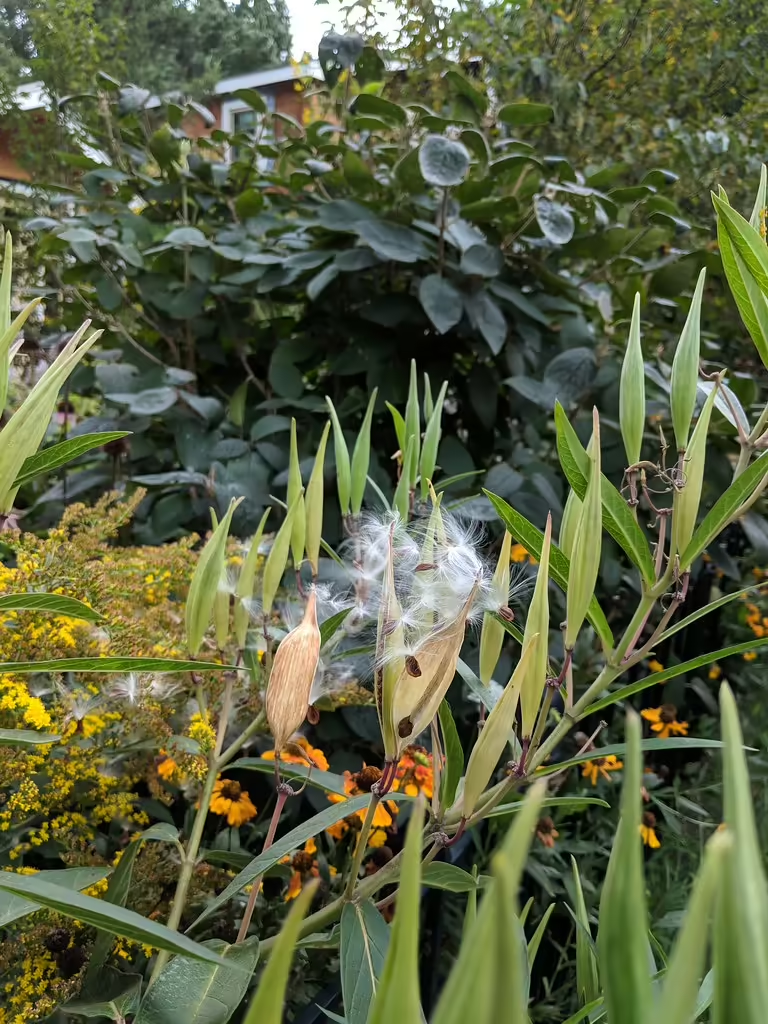
7. Few-flower Milkweed (Asclepias lanceolata), a Milkweed for Moist Soils
Few-flower Milkweed (Ascelpias lanceolata): Few-flower milkweed is native to the southeastern counties on the Coastal Plain of South Carolina (Kartesz 2015). In the wild, few-flower milkweed grows on the edges of marshes, wet pine barrens, savanna, and glades. Growing from 2 to 5 feet tall, it has flowers that are generally orange to red, but can be yellow or red-purple and bloom from May to August.
In your South Carolina butterfly garden, this milkweed is hardy in zones 5-11 and requires full sun to part-shade in soil that is loamy and moist to wet.

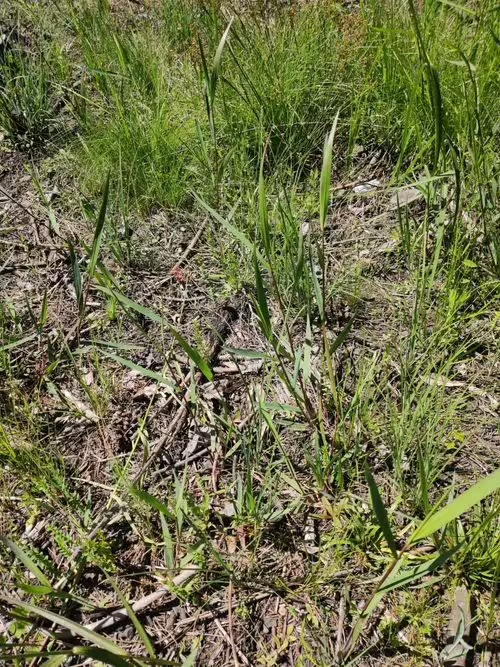
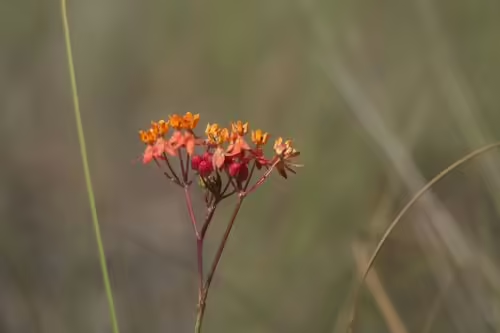
8. Long-leaf Milkweed (Asclepias longifolia), a Milkweed for Moist Soils
Long-leaf Milkweed (Ascelpias longifolia): Long-leaf milkweed is native and rare in the southeastern counties in the Coastal Plain of South Carolina (Kartesz 2015). Long-leaf milkweed has two varieties, one of which, Asclepias longifolia var. longifolia, is grows in South Carolina. In the wild, this milkweed grows in moist areas and wetlands such as bogs, swamps, and wet flatwoods. Growing from 1 to 2.5 feet tall, the flowers are often greenish-white with a purple tinge and bloom from April to July.
In your South Carolina butterfly garden, variety longifolia is hardy in zones 4-9 and requires full sun and moist to wet soils.
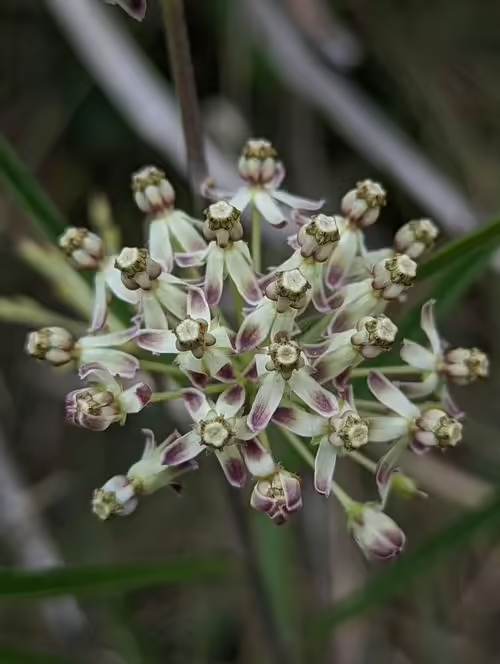

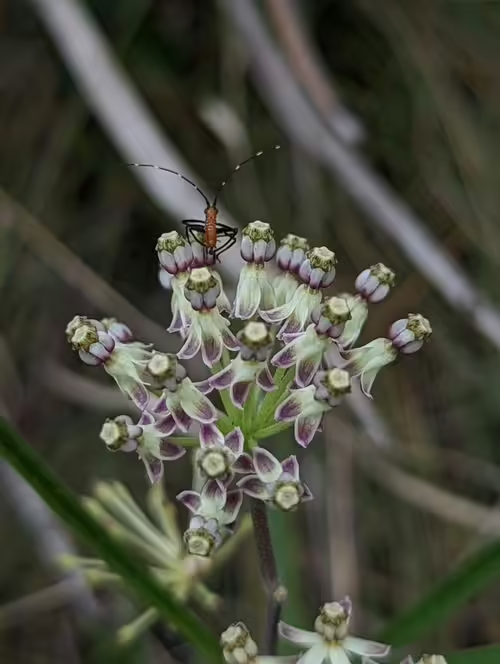
9. Michaux’s Milkweed (Asclepias michauxii), a Milkweed for Wel-drained Soils
Michaux’s Milkweed (Ascelpias michauxii): Michaux’s milkweed is native in the central and southeastern counties of South Carolina (Kartesz 2015). In the wild, Michaux’s milkweed grows in pine savannas, pine-oak woods, sandy pine barrens (Woodson 1954), and dry pinelands (Weakley 2022). Growing from 4 to 16 inches tall, it is the shortest milkweed in South Carolina, and has flowers that are often greenish-white with a purple tinge. The flowers bloom from April to June.
In your South Carolina butterfly garden, this milkweed is hardy in zones 7-11 and requires full sun to partial-shade in well-drained soil.
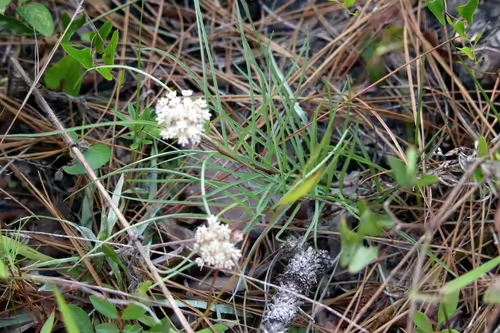


10. Pineland Milkweed (Asclepias obovata), a Milkweed for Well-drained Soils
Pineland Milkweed (Ascelpias obovata): Pineland milkweed is native in the southwestern and southern counties of South Carolina (Kartesz 2015). In the wild, pineland milkweed grows, as the name would suggest, on pinelands, but it can also be found on roadsides and fields. Growing from 0.5 to 3 feet tall, it is a short milkweed in South Carolina, and has flowers that are greenish-yellow with purplish hoods that bloom from June to October.
In your South Carolina butterfly garden, this milkweed is hardy in zones 7-10 and requires full sun with well-drained soils.



11. Savannah Milkweed (Asclepias pedicellata), a Milkweed for Sandy Soil
Savannah Milkweed (Ascelpias pedicellata): Savannah milkweed is native and rare in the southeastern and eastern Coastal Plain of South Carolina (Kartesz 2015). In the wild, savannah milkweed grows in long-leaf pine flatwoods and savannas that have a fire ecology. Growing from 0.5 to 1.5 feet tall, the flowers bloom from May to July and have a yellow, green to creamy white color.
In your South Carolina butterfly garden, this milkweed is hardy in zones 7-10 and requires full sun and mesic to moist sandy soil.


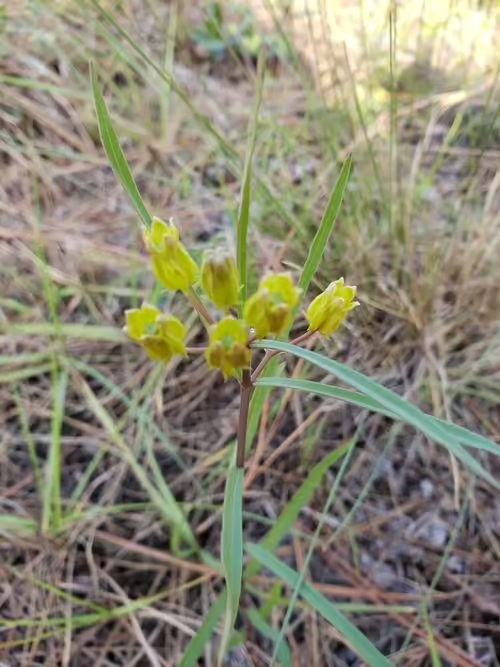
12. Aquatic Milkweed (Asclepias perennis), a Milkweed for Moist to Wet Soils
Aquatic Milkweed (Asclepias perennis): Aquatic milkweed is native to the central and southeastern counties of South Carolina (Kartesz 2015). In the wild, aquatic milkweed grows on the margins of wetlands such as swamps, alluvial woods, ditches, and marshes. Growing from 1 to 3.5 feet tall, this milkweed has white to pink, purplish-rose, or purple flowers that bloom from April to October.
In your South Carolina butterfly garden, this milkweed is hardy in zones 6-10 and generally requires full sun to partial shade with moist soils.
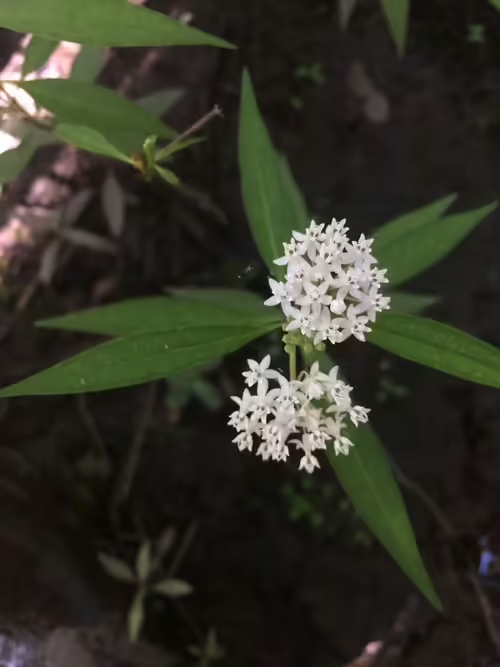
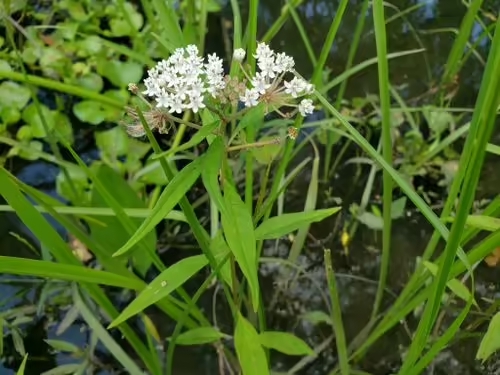
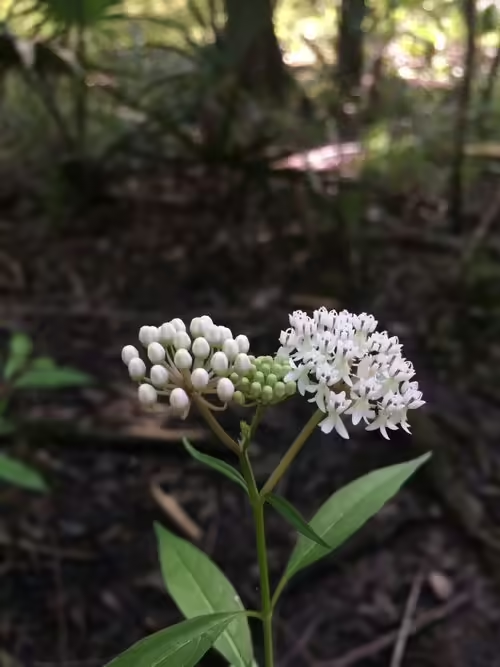
13. Four-leaf Milkweed (Asclepias quadrifolia), a Milkweed for Dry Rocky Soils
Four-leaf Milkweed (Asclepias quadrifolia): Four-leaf milkweed is located in the northern and northwestern counties of South Carolina (Kartesz 2015). In the wild, four-leaf milkweed grows in open areas such as roadsides, pastures, and prairies that have some disturbance. Growing from 1 to 3 feet tall, the flowers range from white to pink in color and bloom from April to July.
In your South Carolina butterfly garden, this milkweed is hardy in zones 5-8 and prefers places where it can enjoy full sun or part-shade and dry rocky soils.
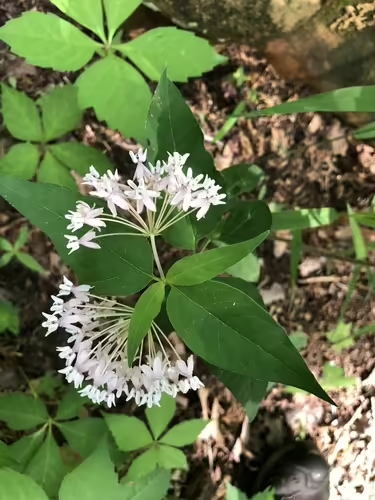
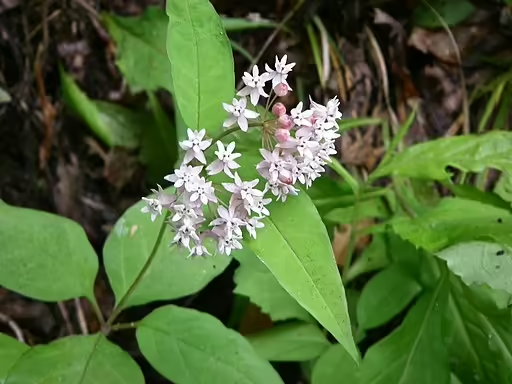
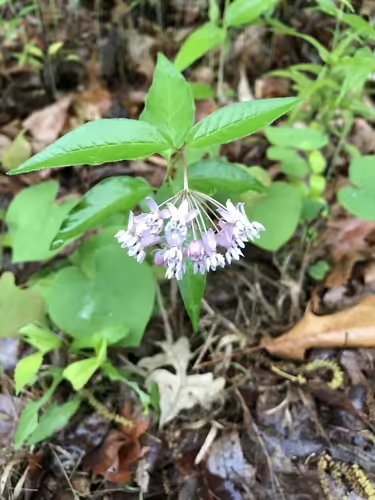
14. Red Milkweed (Asclepias rubra), a Milkweed for Moist to Wet Soils
Red Milkweed (Asclepias rubra): Red milkweed is located the central and southeastern counties of South Carolina (Kartesz 2015). In the wild, red milkweed grows in wet open areas such as meadows, bogs, and pine barrens. Growing from 1 to 3 feet tall, the flowers range from pink, purple, red, lavender in color and bloom from May to August.
In your South Carolina butterfly garden, this milkweed is hardy in zones 6-9 and it prefers places where it can enjoy full sun or part-shade and wet organic soils.

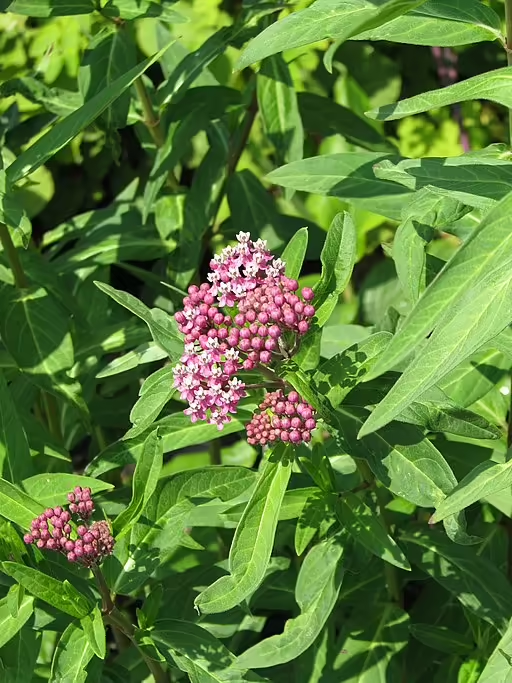

15. Common Milkweed (Asclepias syriaca), a Milkweed for all Soils
Common Milkweed (Asclepias syriaca): Common milkweed grows in the central and northwestern counties (Kartesz 2015). In the wild, common milkweed grows in open areas such as fields, pastures, and roadsides, where it can receive full sun. Growing up to 6 feet tall, it is a tall milkweed having flowers ranging from pink, greenish-purple, greenish-white, to white and bloom from June to August.
In your South Carolina butterfly garden, this milkweed is hardy in zones 3-9 and requires full sun to part-shade and any type of soil. As the name implies, this is one of the most common and important milkweed species for the Monarch butterfly. Seeds of common milkweed can be purchased in the McMullen House Bed & Breakfast Garden Shop.
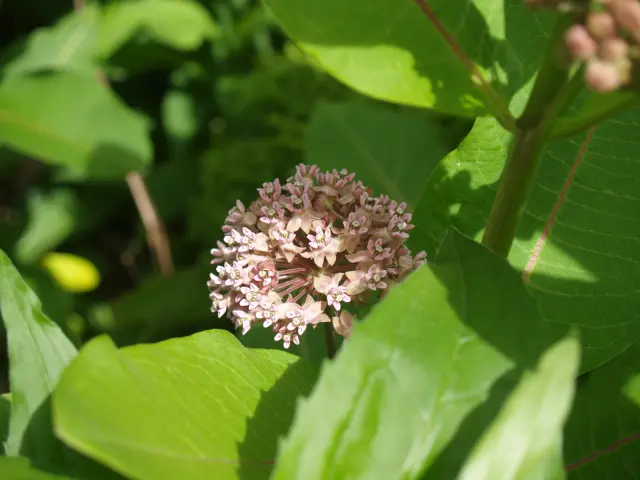

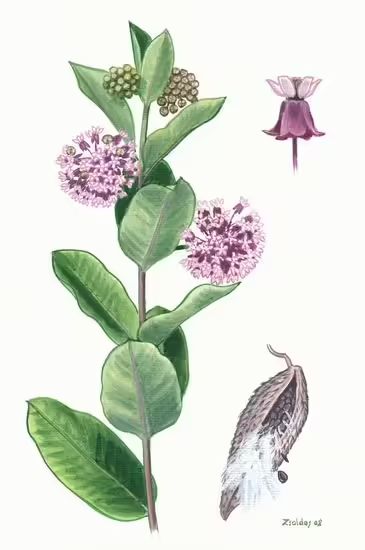
16. Velvetleaf Milkweed (Asclepias tomentosa), a Milkweed for Sandy Soils
Velvetleaf Milkweed (Asclepias tomentosa): Velvetleaf milkweed is located in the Sandhills region in the central counties of South Carolina (Kartesz 2015). In the wild, velvetleaf milkweed grows in sandy pine woodlands with long-leaf pine (Pinus palustris) and scrub oak sandhills. Growing from 2 to 3 feet tall, it has flowers ranging from yellow-cream with pink to maroon tints that bloom from April to August.
In your South Carolina butterfly garden, this milkweed is hardy in zones 7-10 and requires full sun and mesic to dry sandy soils. Seeds of velvetleaf milkweed can be purchased in the McMullen House Bed & Breakfast Garden Shop.


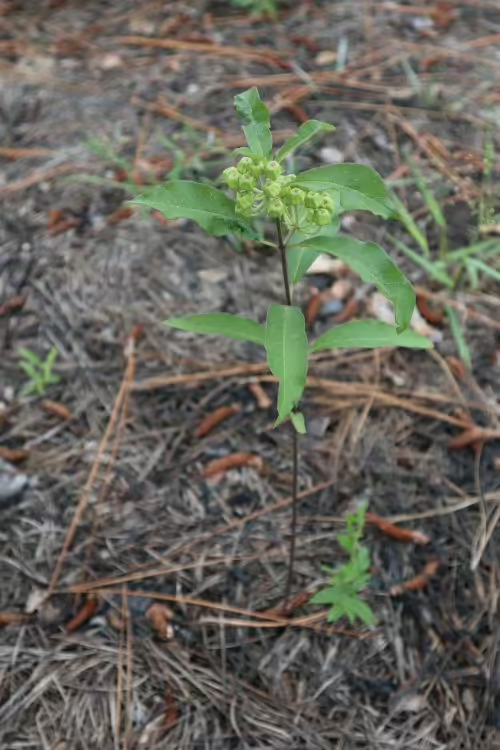
17. Butterfly Weed (Asclepias tuberosa), a Milkweed for all Soils
Butterfly Weed (Asclepias tuberosa): Butterfly weed is one of the most common for butterfly gardeners on the east coast of the United States. In South Carolina, subspecies rolfsii and tuberosa occur. The former has a limited range in northern and southwestern counties, while the latter occurs throughout the state (Kartesz 2015). In the wild, butterfly weed grows in open areas with full sun such as fields, roadsides, and open woods. Growing from 1 to 3 feet tall, it has characteristically orange flowers that bloom throughout the summer and sometimes into the autumn.
In your South Carolina butterfly garden, this milkweed is hardy from zones 3-9 and requires full sun in any type of soil condition. This is one of two milkweeds in North America that does not have a milky sap. Seeds of butterfly weed can be purchased in the McMullen House Bed & Breakfast Garden Shop.

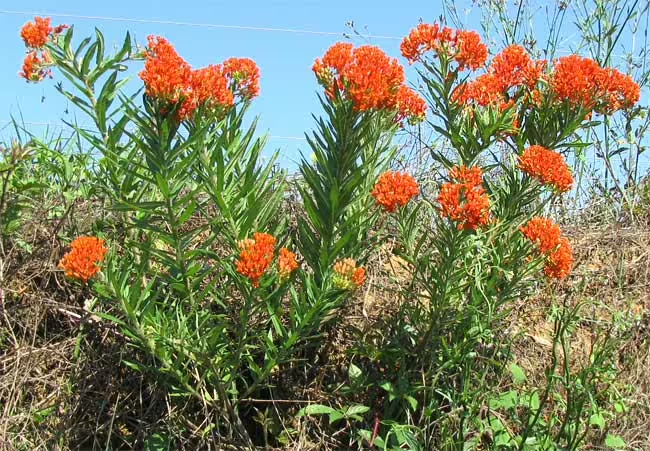

18. Red-ring Milkweed (Asclepias variegata), a Milkweed for Dry Sandy Soils
Red-Ring Milkweed (Asclepias variegata): Red-ring milkweed is located throughout South Carolina (Kartesz 2015). In the wild, red-ring milkweed grows in open disturbed areas such as thickets and roadsides. Growing 1 to 4 feet tall, it has white colored flowers with a ring of purple to red that bloom from May to July.
In your South Carolina butterfly garden, this milkweed is hardy in zones 3-9 and prefers part-sun to light-shade and dry sandy or rocky soils. Seeds of Red-ring milkweed can be purchased in the McMullen House Bed & Breakfast Garden Shop.
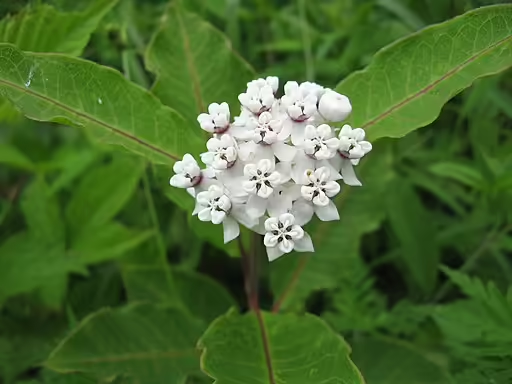

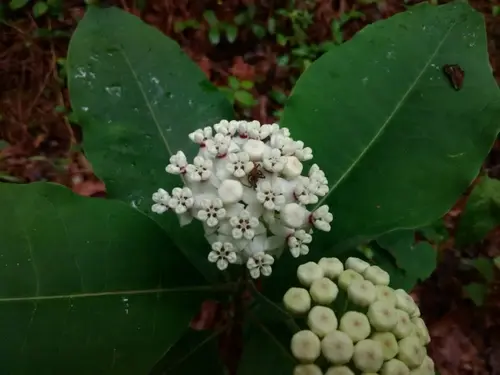
19. Whorled Milkweed (Asclepias verticillata), a Milkweed for Medium to Dry Soil
Whorled Milkweed (Asclepias verticillata): Whorled milkweed is located in the Piedmont and mountain regions of South Carolina (Kartesz 2015). In the wild, whorled milkweed grows in open areas such as meadows and fields, where it can take advantage of full sun. Growing from 1 to 3 feet tall, it has green to white flowers that bloom from May to September.
In your South Carolina butterfly garden, this milkweed is hardy in zones 3-9 and requires full sun to part-shade with medium to dry soil. Seeds of whorled milkweed can be purchased at the McMullen House Bed & Breakfast Garden Shop.
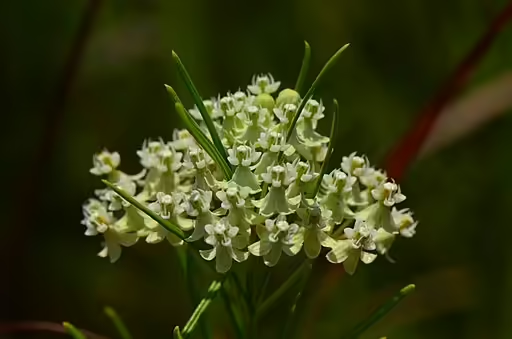
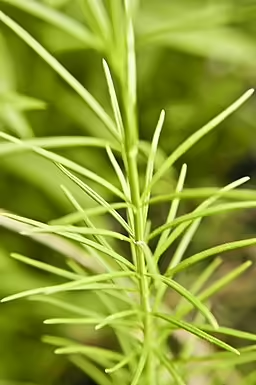
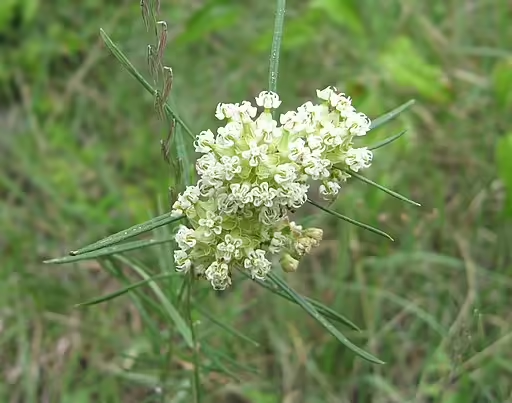
20. Green Comet Milkweed (Asclepias viridiflora), a Milkweed for Medium to Dry Sandy Soils
Green Comet Milkweed (Asclepias viridiflora): Green comet milkweed is located generally in the central (Piedmont) and northeastern Coastal Plain of South Carolina (Kartesz 2015). In the wild, green comet milkweed grows in open areas such as meadows and field where there is full sun. Growing up to 3 feet tall, it has flowers, which bloom from June to August, that begin as a green color but age to become yellow with a purple tinge.
In your South Carolina butterfly garden, this milkweed is hardy in zones 3-9 and requires full sun to part-shade with medium to dry sandy soil. Seeds of green comet milkweed can be purchased at the McMullen House Bed & Breakfast Garden Shop.
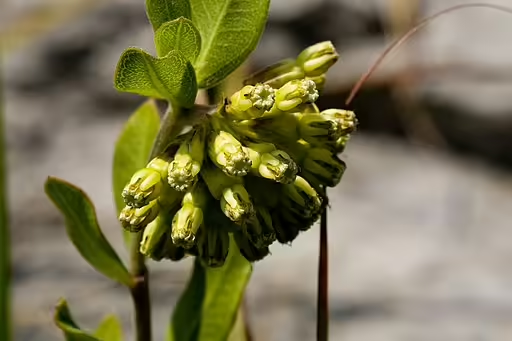
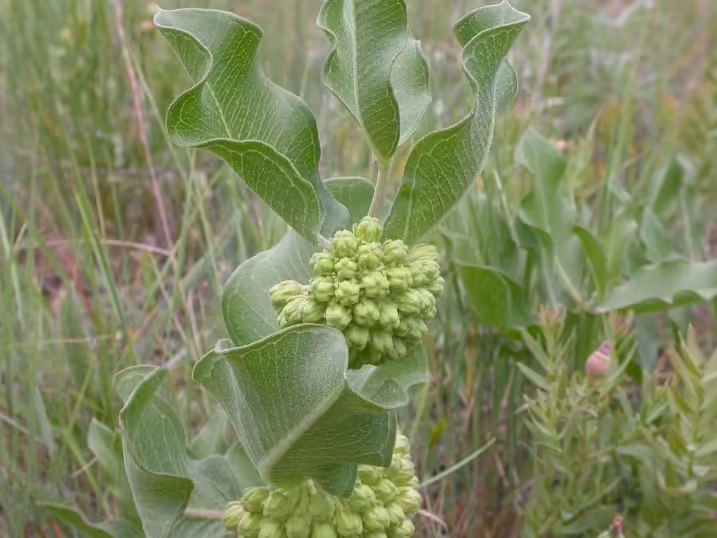
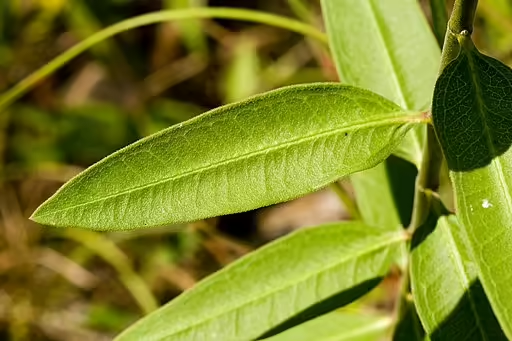
When selecting your South Carolina milkweed, be sure to make sure that it grows in your zone and habitat.
References for South Carolina Milkweeds
- Kartesz, J.T., The Biota of North American Program (BONAP). 2015. Taxonomic Data Center. Link to website. Chapel Hill, N.C. [maps generated from Kartesz, J.T. 2015. Floristic synthesis of North America, Version 1.0. Biota of North America Program (BONAP). (in press)]
- Weakley, A.S. and the Southeastern Flora Team. 2022. Flora of the southeastern United States. University of North Carolina Herbarium, North Carolina Botanical Garden.
- Woodson, Robert E. 1954. The North American Species of Asclepias L. Annals of the Missouri Botanical Garden 41: 1-211.